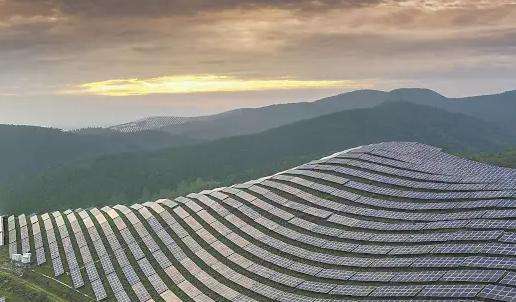Silicon wafers are very fragile and can be easily damaged if they come into direct contact with the outermost glass.
EVA film provides good protection without affecting efficiency and has many advantages. Advantages in terms of adhesion, durability, optical properties, etc.
1. Curing conditions: fast curing adhesive film, heated to 135 ~ 140 ℃, constant temperature 15 ~ 20 min, heated to 145 ℃; , and keep the temperature constant for 30 minutes.
2. Light transmittance: greater than 90%.
3. Cross-linking degree: fast-curing adhesive film is more than 70%, and conventional adhesive film is more than 75%.
4. Peel strength: glass/adhesive film is above 30N/cm, TPT/adhesive film is above 20N/cm.
5. Temperature resistance: high temperature 85℃, low temperature -40℃, no expansion or conthermal traction, good dimensional stability.
6. Resistance to ultraviolet aging: It will not crack or age after long-term ultraviolet irradiation.
What materials are polycrystalline solar panels made of?
1. PVB and EVA
EVA requires two layers; It is pressurized at high temperature by a laminator and becomes one after cooling, which plays a role in fixing and bonding.
PVB is a building material with much better weather resistance, but is more than three times more expensive than EVA. EVA is the mainstream of monocrystalline silicon packaging. For amorphous silicon, we choose PVB for packaging.
2. The difference between TPT, PET and DNP.
In order to maintain the best operating conditions of the solar cells and maintain a lifespan of 25 years, the materialThe backsheet material used must have properties such as UV resistance, water vapor barrier and weather resistance. TPT, PET and DNP are just synonyms for solar cell back films, which play a very good role in protecting solar cells.
Solar cell back films are mainly divided into two categories: fluorine-containing back films and non-fluorine back films. Among them, the fluorine-containing back film is divided into two types: double-sided fluorine-containing (such as TPT) and single-sided fluorine-containing (such as TPE), while the non-fluorine back film is mainly made of many elements ; layers of PET glued together with glue.
TPT refers to using DuPont's TEDLAR (trade name) PVF film on both sides of the back solar film, and adding a layer of transparent PET in the middle for lamination ,i.e. TEDLAR+PET+TEDLAR, hence the name TPT.
The fluorine-free back film made of multiple layers of PET bonded together with adhesive cannot meet the 25-year environmental tests of damp heat, dry heat, ultraviolet and other environmental tests of modules of commercial crystalline silicon solar cells. due to the characteristics of the material itself. Considering the usage requirements, it is difficult to be suitable for crystalline silicon solar cell module packaging.
The outermost layer of the DNP backsheet is made of PET with excellent water resistance, followed by DNP's unique highly durable adhesive layer, which ultimately achieves the excellent product durability.
Generally, companies use EVA+PET.
Polycrystalline solar panels are highly efficient solar panels made of polycrystalline silicon.is made of energy cells, EVA film, weakly tempered glass and lightweight electroplated gold. It can be used in solar street lights, solar lawn lights, solar power generation systems, communications, aerospace and other channels. Polycrystalline silicon is an aggregate containing a large number of single-crystalline particles, which have a variety of unique components arranged in different directions. It is manufactured by melting, casting and solidifying waste monocrystalline silicon materials and metallurgical grade silicon materials. It is simple to manufacture and inexpensive. Usually, the photoelectric conversion efficiency of polycrystalline silicon solar cells is about 18%.
Raw material characteristics: Cells: use high efficiency (more than 18%) monocrystalline silicon solar wafer packaging to ensure high productithere is sufficient energy from solar panels. Glass: Made of tempered low iron suede glass (also known as white glass), thickness 3.2mm, with a light transmittance of over 91% in the wavelength range of the spectral response solar cells (320-1100 nm), for infrared light. greater than 1200 nm Has higher reflectivity. This glass is also resistant to solar ultraviolet rays and light transmission does not decrease. EVA: A layer of high-quality EVA film with a thickness of 0.78 mm and added with anti-UV agent, antioxidant and curing agent is used as the sealant of the solar cell and as bonding agent with glass and TPT. It has high light transmittance and anti-aging ability. TPT: The fluoroplastic film, the back cover of the solar cell, is white and reflects sunlight, thus slightly improving the efficiency of themodule. Due to its high infrared emissivity, it can also reduce the operating temperature of the module. efficiency of components. Of course, this fluoroplastic film first meets the basic requirements of aging resistance, corrosion resistance and airtightness required by solar cell packaging materials. Frame: The aluminum alloy frame used has high strength and strong resistance to mechanical impact. It is also the most valuable element in home solar power generation.














